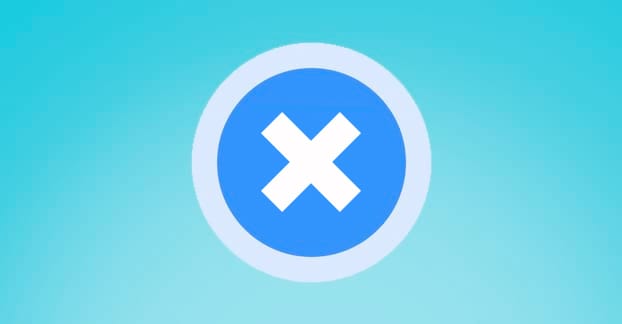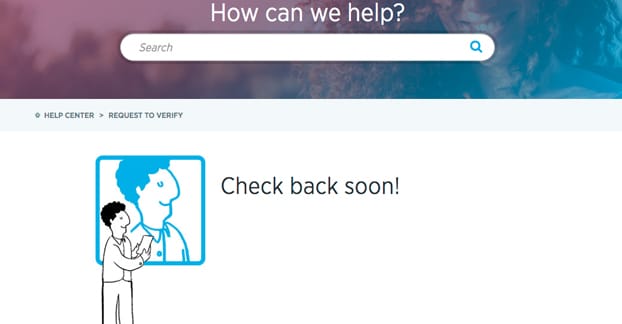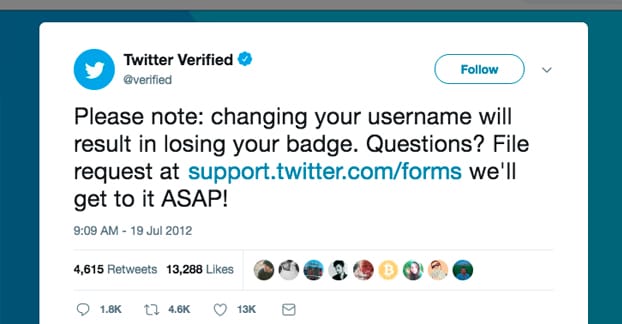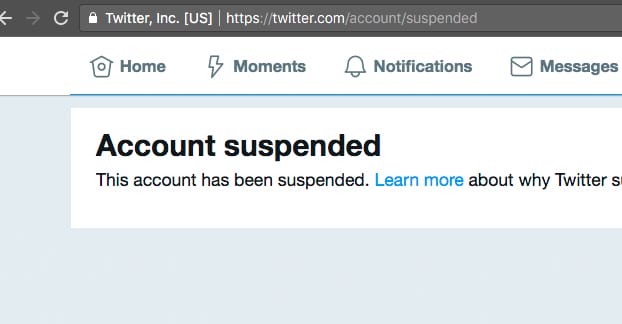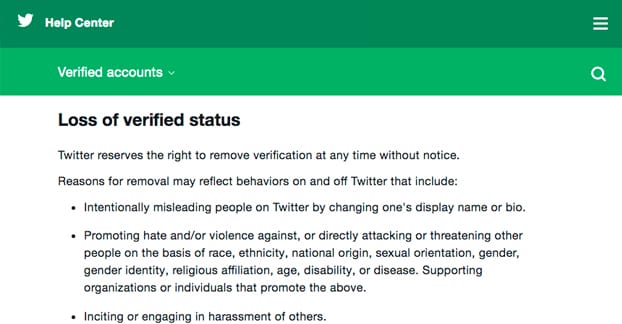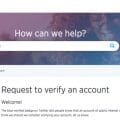Twitter verification is contentious and confusing. Over the years, Twitter has tried to clarify the process, but the evidence and the abuse of the system has gone on for so long that there are counter-examples to just about every rule.
We’ve written a lot about verification, so if you want to read a bunch of (mostly) accurate information, here are some posts you can check out.
- What Kinds of Twitter Accounts Qualify for Verification?
- What Are the Benefits of Being Verified on Twitter?
- 25 Tips that Will Improve Your Chances of Twitter Verification
- What to Do When Your Twitter Verification Request Gets Denied
The reason I say that the information is only mostly correct is that recently, due to massive backlash about hate speech on the site, Twitter has closed verification for the time being. They claim to be working on a new solution, a way to have identity verification without the account being considered promoted in some way. Whether or not they have a “verified voices” form of verification as well remains to be seen.
What this means is that, as of right now, there is no way to get your account verified without being in direct contact with someone high up at Twitter, and being a noteworthy person in the first place. If, for example, a new person was elected to the Senate, that person would be able to get their account verified, because Twitter wants to make sure important voices like politicians are verified.
Other accounts, particularly those of business owners, CEOs, and brands themselves, are fairly unlikely to get verified at this time. You can’t apply for verification, as the verification form is dead. If you’re not in the unique position of being easily recognize across at least a city or state level as an individual, you probably aren’t going to get verification. There are exceptions, sure, but you’ll know if you’re in that kind of position.
All of this combines to mean one thing; verification is currently more important than it ever has been before. If you’re currently verified, you don’t want to do anything that could cause you to lose verified status. If you do manage to lose it, you’re going to have a hard time getting it back, and that can be a problem.
What Causes a Loss of Verification?
There are actually quite a few things that can cause you to lose verification on your Twitter account. Let’s go through the list.
First up, Twitter is a fickle mistress. They can, at any time, and for any reason, remove verification without notice. It’s their platform, and you’re beholden to their rules, which can change at any time. Since verification isn’t something protected under any law, there’s no oversight. If you insult Biz Stone and he sees it and decides to make the right kind of phone call, you can lose verification with no recourse.
Now, in general, Twitter isn’t in the habit of removing verification for no reason. Generally, you will have violated one of the other rules or will have taken some action that leads to a loss of verification. In some cases, they will remove verification from accounts that haven’t been actively using the site for a long time. If you get verified, and then choose to leave the platform for a year, don’t expect to still be verified when you come back. You might be, you might not be, but don’t be surprised if you aren’t.
There are two technical actions you can take that can cause the loss of verification. First is, as you might have guessed from the title of this post, changing your username. Twitter verifies an account based on its username. They tie your personal information to your username, after you have verified that you are who you claim to be. The FAQ even says verification is removed if you are misleading people by “changing one’s display name or bio.”
If you change your username, Twitter doesn’t have that entry in their database anymore. I mean, they could keep it, but there are potential problems with doing so. See, if they kept verification through a username change, what happens if you sell that account? You change the username to that of someone else, who is now verified without having actually verifying their identity. That could be the real person, but it could also be an imposter who now gets to run rampant with the reputation of someone else.
Meanwhile, if you verify your account, change the name and sell it, and register a new one with your old name, what does Twitter do if you want to be verified again? Do they give you verification again so you can repeat the process? Do they decide you shouldn’t be verified and withhold it from someone who was at least at one point noteworthy enough to earn it?
The point is, it’s a hell of a lot easier for Twitter to just tie verification to the account and username together. If one changes, the relationship is broken, and the verification disappears. Don’t change your username if you want to keep verification!
The only exception to this is if you’re using some kind of position-relevant username that changes when your position changes. For example, Paul Ryan has @PRyan as his Twitter username, but since he became Speaker of the House of Representatives, he has used @SpeakerRyan. If he had changed PRyan to SpeakerRyan, chances are pretty good Twitter would have verified it immediately upon asking. He, of course, did not actually change the username; he made a new one for his new position.
The other technical issue that can cause the loss of verification is turning on protected tweets. This one was actually one of the guidelines on the Twitter verification request page, which is no longer available, so there doesn’t seem to be any mention of it as a requirement anymore. However, you can still see it as a requirement in various blog posts around the web, like ours above or this one here.
Obviously, there’s a third “technical” cause that removes verification, and that’s getting your account suspended. If you violate any of the Twitter rules, you’ll end up suspended, and being suspended will remove your verification.
This also applies for any reason your account might be removed. If you choose to temporarily suspend your own account to take a break from Twitter or otherwise become unavailable, this will also remove your verification upon your return.
All of this serves to highlight the issues Twitter had with verification. In order to be verified, you needed to be an active public figure on Twitter who met certain criteria involved in being a noteworthy person or brand. Not just anyone could be verified.
Twitter claims they wanted verification to be used as a validation of identity, not a promotion of message. This is directly at odds with the criteria for verification. If they only verify people they consider to be influencers, it stands to reason that users would take verified status as some special indication of endorsement.
Ironically, perhaps the best solution to the problem would simply have been to verify as many accounts as possible. Open up verification to everyone and it no longer represents a form of endorsement. If everyone is verified, no one really benefits from it, right? The only effect would be that unverified accounts end up looking more like bots even when they aren’t. Some people do value their anonymity and don’t want to give their personal information over to a corporation like Twitter. This is especially true given that Twitter, as a social network, very much sells information as part of their monetization.
Social Causes for Lost Verification
Twitter has been trying to take their position as a discussion site and news outlet more seriously recently. Part of the push for a fixed verification system comes from how many people have been verified while still posting content that is offensive to say the least. Literal, actual Nazis and people posting hate speech against a wide range of minorities have not only not been banned, they have been verified.
Now, if all verification did was be proof of identity, this would be fine, or at least as fine as any other venue allowing hate speech is. With the atmosphere on Twitter of verification being endorsement, however, Twitter has been tacitly promoting hate speech. Now and then they make a token effort to ban a few of them, but the fact that moderation is so slim and many of these accounts persist is damning.
At the moment, Twitter’s FAQ for verification focuses largely on social reasons for losing it. The “loss of verified status” section has reasons that primarily include the following from here:
- “Intentionally misleading people on Twitter by changing one’s display name or bio.” This covers changing a username, but also including making a fake bio to imitate another user or brand.
- “Promoting hate and/or violence against, or directly attacking or threatening other people on the basis of race, ethnicity, national origin, sexual orientation, gender, gender identity, religious affiliation, age, disability or disease.” This is their overall hate speech clause. Any tweets or any actions that Twitter can tie to your account that stem from racism or hate in any form can cause loss of verification.
- “Supporting organizations or individuals that promote the above.” You don’t have to be a Nazi to support Nazi ideals, and Twitter doesn’t want either position promoted on their platform.
- “Inciting or engaging in harassment of others.” Cyber-bullying may seem like a juvenile term, but when people are actually committing suicide over harassment and when threats of violence reach “act of terrorism” levels, it’s a big enough problem Twitter needs to step in.
- “Violence and dangerous behavior” including “Directly or indirectly threatening or encouraging any form of physical violence against an individual or any group of people, including threatening or promoting terrorism. Violent, gruesome, shocking, or disturbing imagery. Self-harm or suicide.” Effectively any form of “kill yourself” or “someone should hurt this guy” or anything else, joking or not, is grounds for removal of verification.
- “Engaging in activity on Twitter that violates the Twitter Rules.” This is the catch-all to allow them to remove verification for any rules violation even if it isn’t explicitly stated in the list.
Number 2 is particularly interesting in light of Twitter’s caveat: reasons for removal may reflect behaviors on and off Twitter. In particular, it’s a way around their own terms of service. For example, if a user keeps their Twitter account “clean” but is known to go to Nazi rallies or promotes hate speech outside of the site, Twitter can remove that user’s verification. They can’t ban the user for violations of their terms of service, because the user hasn’t done anything on Twitter itself. They can, however, remove this indication of social validation.
Of course, several of these are redundant. Most entries on the list above, when performed on Twitter itself, are grounds for account removal. Having your account suspended is obviously going to make verification a moot point, but at the same time, Twitter has been unable to keep up with the work necessary to actually ban all of the horrible people on their site.
And, of course, you’re never guaranteed to get your verification back, even if you clean up your act. If it’s something trivial like a username change from one reasonable name to another – KrogerStore to Kroger, or whatever – Twitter is likely to restore verification. For any rules violation, when they remove verification, it’s likely gone for good.
All of this, by the way, only applies right now, as of the time this article is posted. Once Twitter figures out what they’re doing with verification and pushes out a new system, you’ll need to look into whatever the new rules will be. What those rules will be remains to be seen.
